Developing Effective Agility At Learning Pool
an agile transformation case study
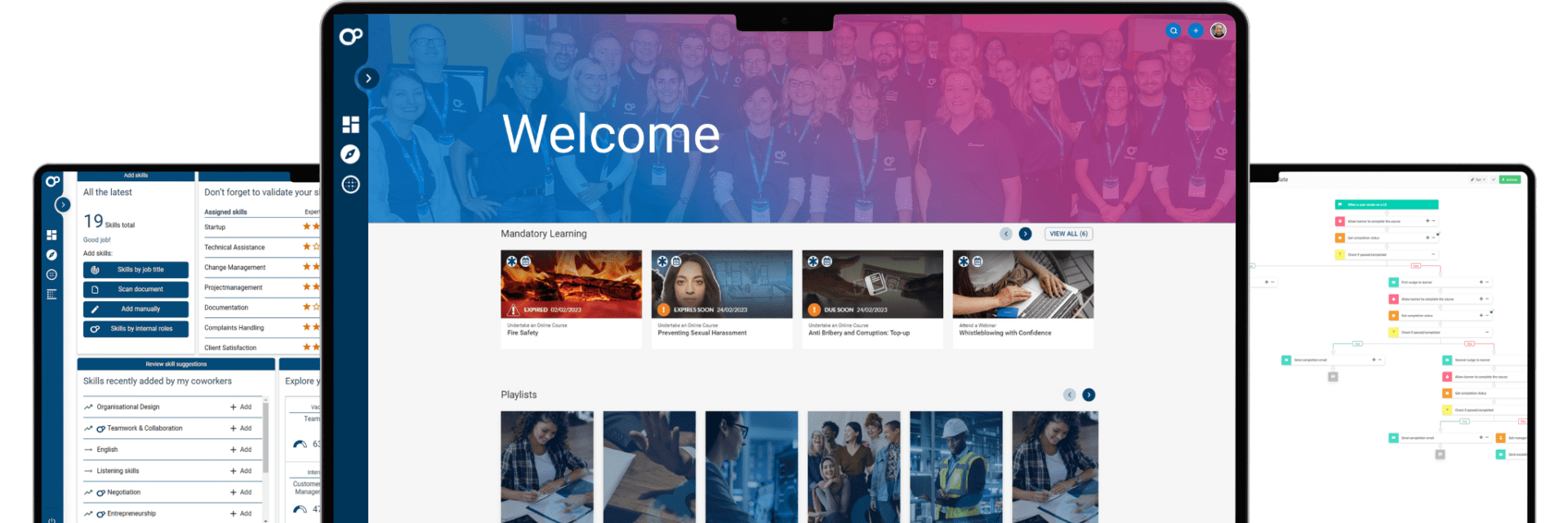
- 2,000+ customers, supporting 26 million learners in 30 countries across 42 different languages
- 500+ employees with experience in L&D, instructional content design and specialist system development skills based in 10 global offices
- 98% client recommendation rate
Background
Learning Pool’s comprehensive learning platform, combines the power of analytics and authoring to support user engagement with social and self-directed elearning.
In 2021, Despite the impact of the COVID-19 pandemic, Learning Pool’s Learning Suite was recognised as a Core Challenger on the Fosway 9-Grid for Learning Systems, while retaining its lower total cost of ownership status.
By 2022, the Learning Pool team continued to make great strides, including rolling out their first million user deployment, carrying out a fifth acquisition in as many years and adding to their list of customers and industry recognition awards.
Challenges and Getting Started
Let’s be clear, Learning Pool’s growth from startup to global player was evidence of their focus on excellence and ability to bring innovation to their clients. Yet, even with this success, the leadership recognised some changes were needed to continue to realise their ambitions to grow the company.
An “internal-agilers” group was setup for anyone in the company who want to explore how to make things better. Company-wide retrospectives were held, and all styles of agility were researched and explored.
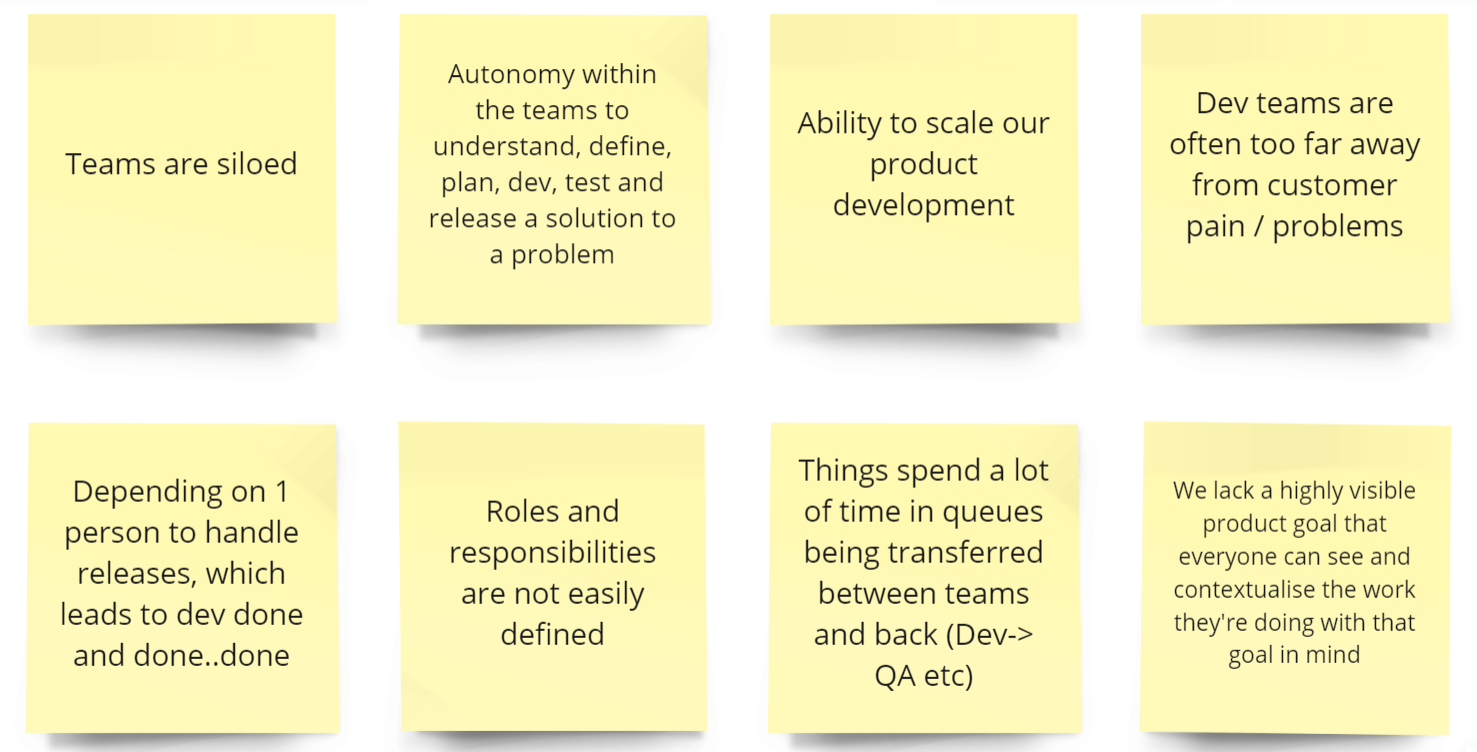
“Integration of work across current products is hard, competing priorities, and a dependency on one team blocks work that is completed by another team. I question whether we do inspection and measurement well. How are we validating that what the team has delivered was the right thing to deliver, pivot and adapt based on that measurement and celebrate our success?”
The Approach
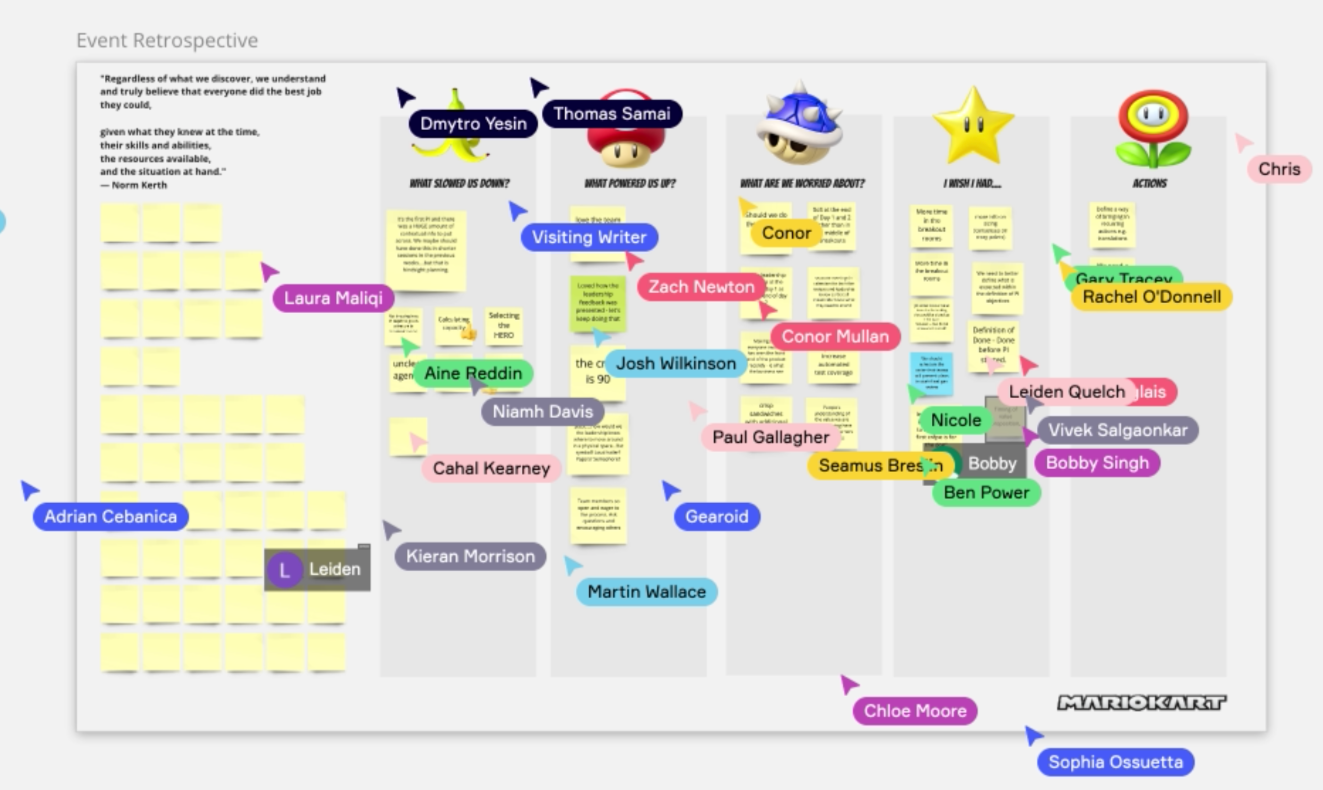
- Multiple efficient engineering teams working together at scale
- Deliver the 2022 roadmap and increase industry recognition (Fosway 9-Grid)
- Increased competency of people in the key agile roles
- Increased clarity for the teams and visibility for the leadership
Brian Lockington, Agile Coach said: “Our approach to agile transformation is obviously to be agile ourselves!
We start with respecting the existing people and processes! This means working with the leadership and teams to help them discover what they want changed, prioritising these items and planning what we can realistically achieve in the next time period. We then start to do the work and regularly inspect the results and adapt to what we’ve learnt.
We help create teams of mates at all levels – psychologically safe groups of people where a healthy mindset of relentless improvement helps them iterate towards their goals.
Learning Pool experimented with so many tactical improvements but strategically always focused on delivering value, on developing their people and on increasing the efficiency of all processes.”
Product and Business Outcomes
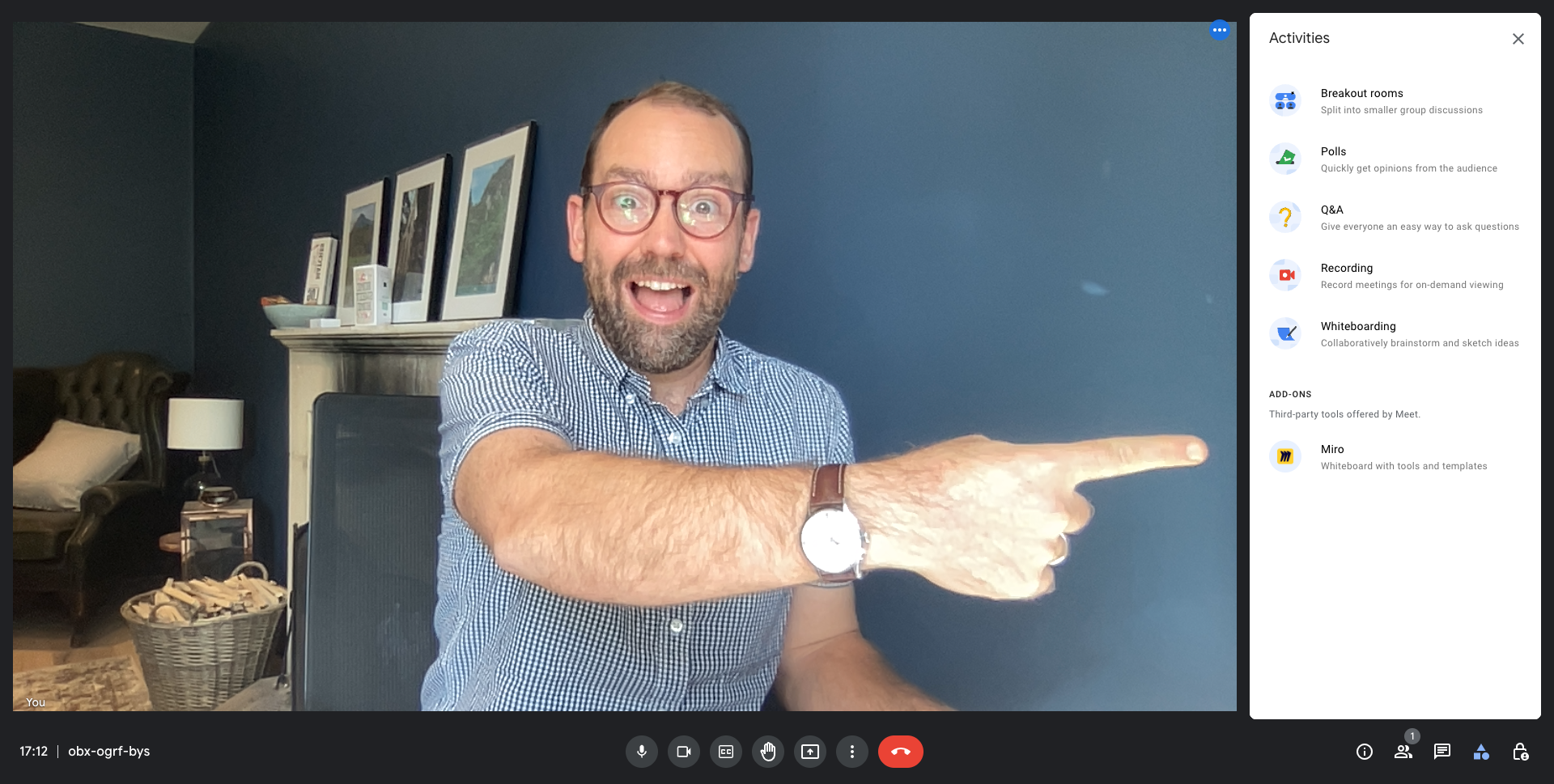
- Delivered the 2022 roadmap 3 months sooner than expected (90 features, 12 integrations) while also merging two complex products and delivering strategic client development for global brands.
- Upgraded to a Core Leader in the 2023 Fosway 9-Grid
We have gone from a place of almost complete reliance of the teams on the stakeholders to a world where the teams can own and solve a problem from start to finish, and have the skills and processes to turn these problems into valuable outcomes for our clients.
We are able to communicate our process to our colleagues and clients to help them understand how we choose and prioritise development based on value to them and the product, which has revolutionised expectation management and allowed us to focus on being a product business, not a feature factory or an outsourced development company for key clients.”
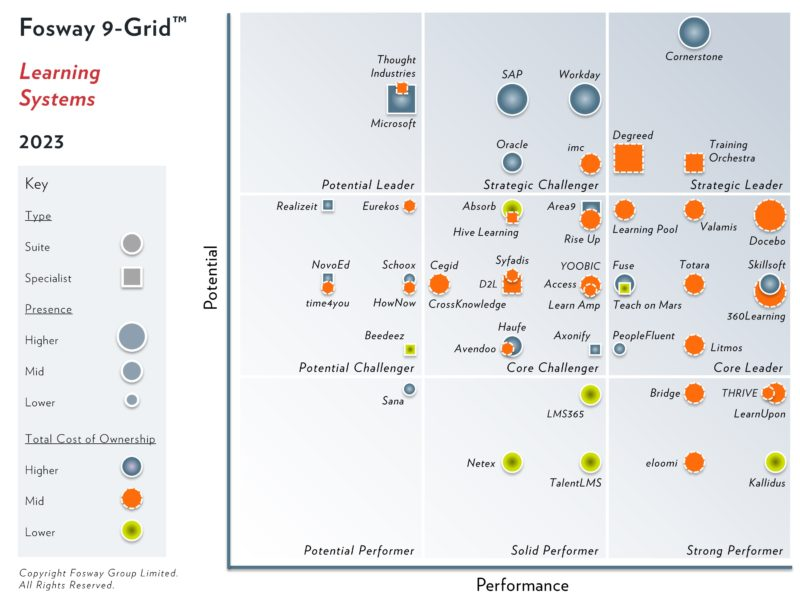
Senior stakeholders now communicate the value that we are looking for more clearly and concisely. We ensure that we are focussed on a few things, rather than lots of things, providing a clear problem with a distinct and limited set of expected outcomes. ‘Slicing the cake’ based on value has been critical.”
This simply would not have been possible 18 months ago.”
Team Outcomes
In the teams there was a focus on value and learning. Leadership demonstrated a genuine openness to explain the roadmap, mentor the teams and learn themselves.
With focused planning and delivery meetings, collaboration in virtual whiteboards and light touch governance, issues surfaced sooner and were dealt with faster. Processes were quickly optimised, product knowledge increased and working software was demonstrated sooner.
A focus on feedback helped voices be heard. Regular space for innovation and community of practices inspired creativity and helped increase technical expertise and build a team of mates.
%
Increased Releases Per Month
%
Decreased Bug Fix Tickets
%
Increased Automation Test Coverage
%
Decreased Average Build Time
%
Decreased Support Resolution Time

Hard Things
It may sound like everything went smoothly all the time, but agile transformation is hard, and a huge amount of effort was invested to continually reflect and improve
Learning Pool invested in bespoke training so that the whole group had a shared understanding of agility and had a chance to openly discuss the current process and reconcile any past agile experiences (good and bad).
Leadership and team coaching, role based coaching clinics and 1-2-1’s helped people talk about their fears and deal with the thorny issues that were already there and that emerged. This journeying-with-people approach helped apply the concepts in real life situations as they happened. Challenges were mostly overcome by simply making dealing with the problems unavoidable. It wasn’t about telling people what to do, rather helping everyone see clearly and then agree to try something better.
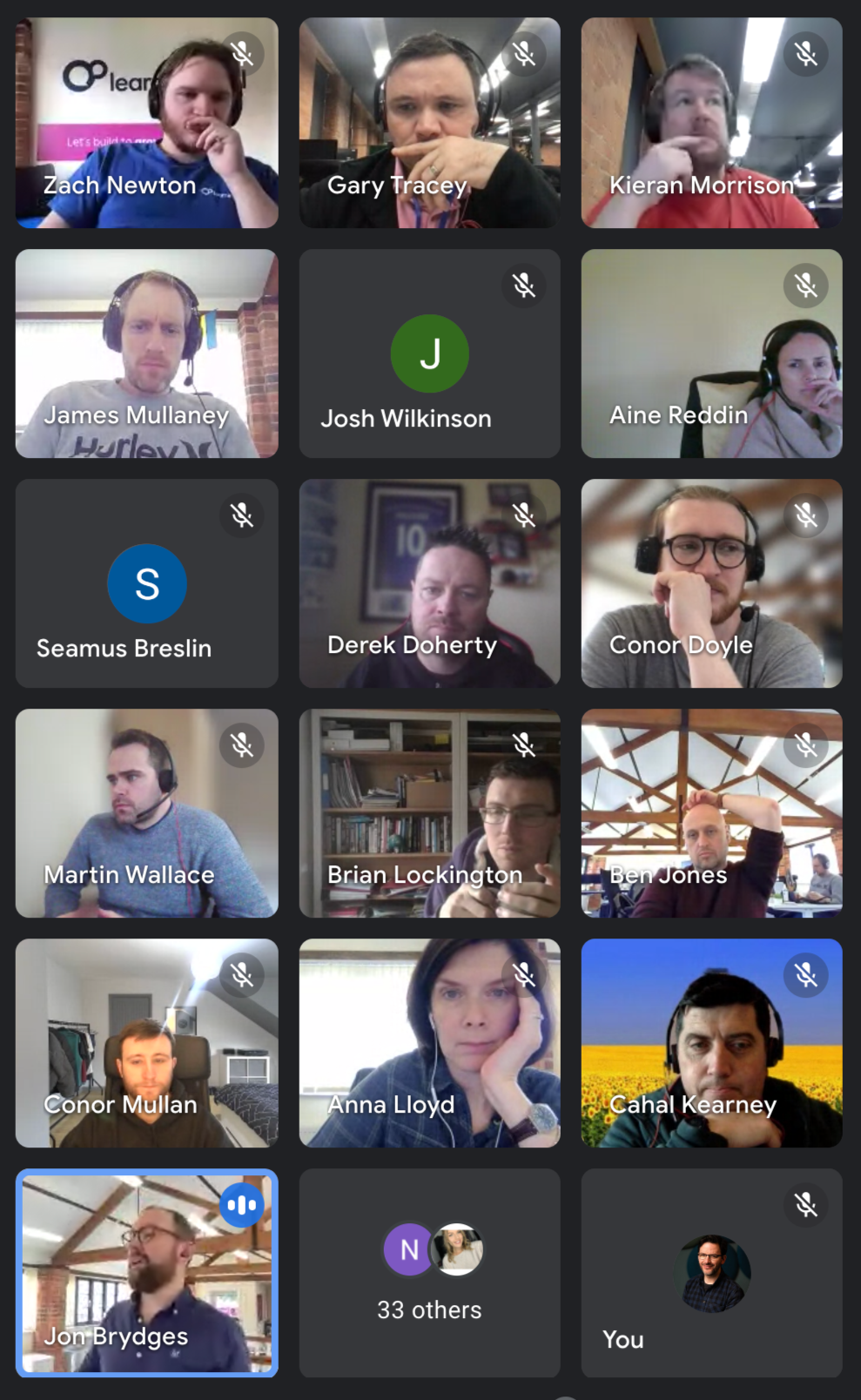
Brian Lockington, Agile Coach said: “Change is difficult for everyone. When you ask people to change, they inevitably can end up a little stressed and outside their box-of-normal. Unusual behaviour occurs and this is where supporting people becomes crucial. The sweet spot is when people choose for themselves the best change to do next.”

- Breaking down the departmental silos,
- Sharing the ownership of quality,
- Overcoming the lack of interaction and collaboration,
- Balancing new features vs technical work vs client work,
- Solving systemic impediments that everyone had just grown to accept,
- Sorting the automation deficit,
- Improving the cycle time of getting work into production,
- Stopping dependencies slipping through the gaps,
- Getting more people to know more people,
- Understanding the value of other roles in the team,
- Reducing reliance on certain key people,
- Filling the gaps in understanding,
- Giving more clarity into the business needs and insight into the delivery,
- Supporting individuals who were resistant to change,
- Helping mediate interpersonal conflict.
Brian Lockington, Agile Coach said: “Take a second before you judge that list, I’ll bet you have similar things you would like to improve in your company! Remember, agile never promised to fix your issues, rather to shine a light on the lack of agility in yourself, your team, your product and your organisation. When done well, agility should help the group make a good choice about what to do next to improve things for everybody.”
Reflections
So what about the people who instigated this transformation? What are the differences they notice between then and now?
